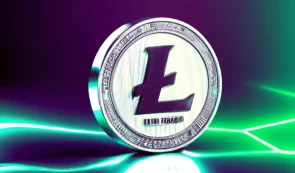What is Litecoin
Litecoin is a peer-to-peer cryptocurrency that has gained quite a wide distribution since its inception in 2011.
As a form of digital money that uses a blockchain to maintain a public ledger of all transactions, Litecoin is used to transfer funds directly between individuals or businesses without the need for an intermediary such as a bank or payment processing service.
How is Litecoin created?
Like all cryptocurrencies, Litecoin is not issued by a government, which historically has been the only entity the public trusts to issue money. Instead, cryptocurrency is created through a more complicated procedure called mining. Unlike traditional currencies, the supply of Litecoin is fixed.
Eventually, there will only be 84 million LTC coins in circulation. Every 2.5 minutes (as opposed to the 10 minutes for Bitcoin), the Litecoin network generates a block. And that’s where its inherent value comes from.
One of the main goals of Litecoin was to reduce the block confirmation time from 10 minutes to 2.5 minutes so that more transactions could be confirmed. This made this network four times faster than Bitcoin. Every 2.5 minutes, a block is mined, and 25 coins are generated. This means that currently, 14,400 LTC are mined every day.
How much is Litecoin worth?
Any currency – even the US dollar or gold bars – is only as valuable as society thinks. If the Federal Reserve starts issuing too many notes, the value of the dollar will drop in no time. Any good or service becomes less valuable when it becomes easy and cheap to obtain.
The creators of Litecoin understood this from the beginning. By limiting the number of LTC in circulation, the founders could eliminate people’s fears of overproduction.
There are advantages inherent in Litecoin over Bitcoin. LTC can handle more transactions, given the shorter block generation time. Litecoin also has a barely noticeable transaction fee. It costs 1/1000 of LTC to process a transaction, regardless of size. Compare that to PayPal’s 3% fee.
Founder of Litecoin
Charlie Lee founded LTC in October 2011. Lee is a former Google and Coinbase employee whose idea was to complement Bitcoin by solving some of its problems, such as transaction times, fees, and more.
Charlie Lee took the core code from Bitcoin and made his changes to make the protocol work in a way that he thought would best allow for large-scale adoption of the currency. In other words, his idea was to make a “lighter” version of Bitcoin.
On December 18, 2017, Litecoin reached its highest level of $360.93, which compared to the price from one year prior ($4.40) was incredible – an 8,200% increase. This fully reflected the booming cryptocurrency market, whose total market capitalization shot up from $17.7 billion to around $650 billion in just one year – an increase of over 3,600%.
Litecoin yield
Bitcoin uses SHA-256 (Secure Hash Algorithm 2), which is considered relatively more complex. Litecoin uses a memory-intensive algorithm called a script.
Different persistence algorithms mean other hardware, and you must ensure your mining platform meets the correct specifications to produce Litecoin.
Litecoin as a tool of the future
LTC is often compared to bitcoin, which functions similarly, excluding transaction costs, which are about 1/50th of the size. For many traders and users of cryptocurrencies, Litecoin prices act more rationally than bitcoin and portend a more sustainable future.
Trading with Litecoin
The rise in popularity of LTC and other cryptocurrencies is largely in response to the demand for alternative currency options that have nothing to do with centralized banks and governments.
The other side of the demand is from traders and investors who have realized the enormous potential of cryptocurrencies.


